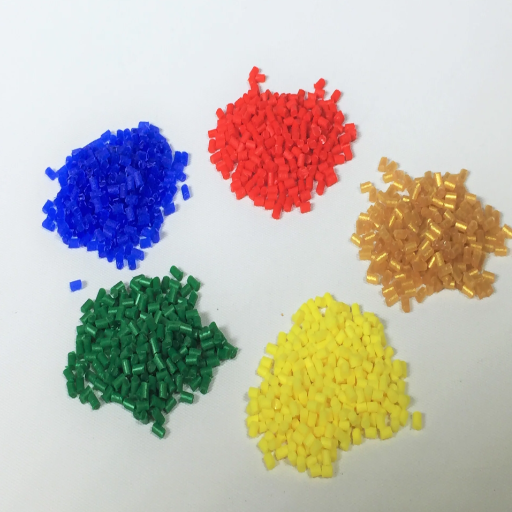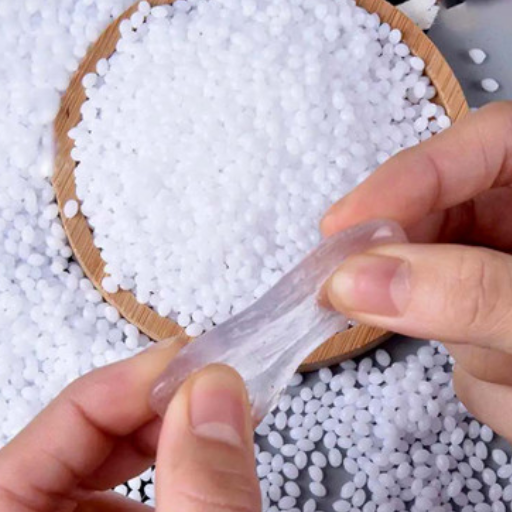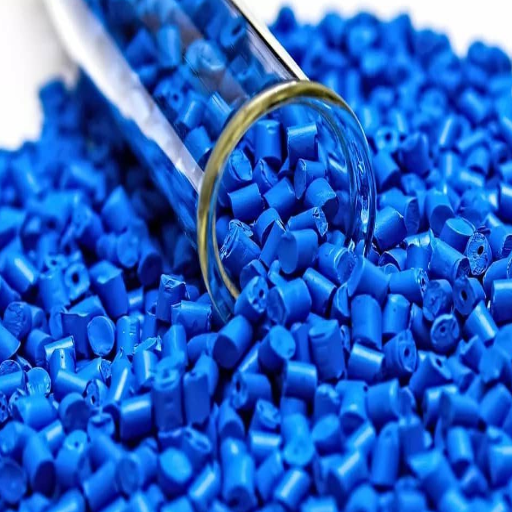Polycarbonate is a thoroughly researched material. This is due to its combination of extensive strength and transparency, which assumes a place in the timetable of strength and thermoplastics. It is worth noting that polycarbonate is quickly becoming one of the most needed materials across numerous sectors, such as construction, automotive, and even healthcare, due to its polymer-like properties. In this blog, I will investigate the key properties that set polycarbonate apart from most polymers and why its usage continues growing in manufacturing today. The primary focus of this article will be to provide insight into both sides of the argument as to why polycarbonate is one of the most versatile and reliable materials on the market.
What are the key characteristics of polycarbonate plastic?
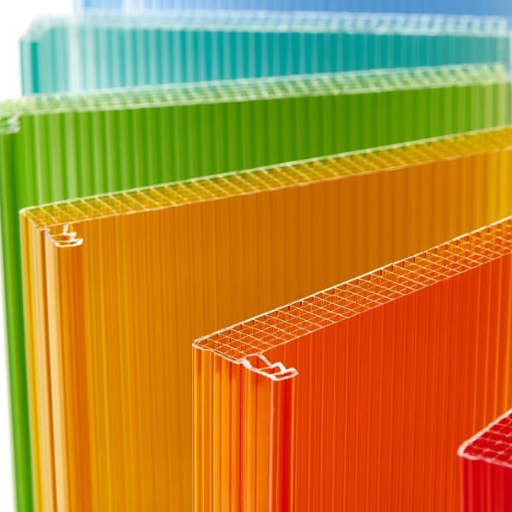
Polycarbonate is effective in the form of a thermoplastic because it is highly light and impact-resistant with high transparency. It is also imperative to consider that polycarbonate can withstand much strain while maintaining tensile strength. Unlike many polymers, this plastic can withstand low and high thermal conditions, making the element more appealing; once appealed to, it can be used within the automotive and eyewear industries alongside electronics due to its optical clarity. Of course, its prospects remain bright owing to the additional benefit of monomer production through molding, extrusion, and thermoforming.
High impact resistance and durability
Polycarbonate, with an impact resistance nearly 250 times the strength of many traditional materials, has been recognized as one of the most potent substances used in riot shields, armored windows, and industrial safety equipment. This degree of toughness provides a long span of effectiveness while performing under varying environmental factors, mechanical stress, and high-impact forces. The combination of polycarbonate’s strength and flexibility over a wider temperature range gives it a distinct edge many rely on. This only adds to its mechanical toughness and renders it a valuable material in many industries. This is one reason polycarbonate replaces glass; engineers can create strong and durable components when combined with other materials.
Optical clarity and transparency
For enhanced performance, polycarbonate lenses let in nearly 90% of light, allowing a wide range of opportunities for their uses, such as eyeglass lenses and automobile windows. Polycarbonate’s unique combination of high strength, low density, and considerable resistance to impacts has gradually made it more and more sought-after in many industries. This also enables polycarbonate components to achieve a wide variety of coatings that enable precise optical performance without affecting the lens’ shape, allowing for exact laws of physics to apply. Though there are cheaper alternatives, polycarbonate continues to be a dominant material when it comes to frontal lenses and protective barriers.
Heat and temperature resistance
Seemingly unfazed by high temperatures, polycarbonate can sustain heat up to 250°F (121°C), making it helpful for applications exposed to extreme heat fluctuations. In addition, its flame-retardant and self-extinguishing properties make the material highly useful for both industrial and general consumer applications, as it needs to adhere to strict safety standards. Plus, its superior resistance to heat and temperature is an added benefit.
What are the typical applications of polycarbonate?
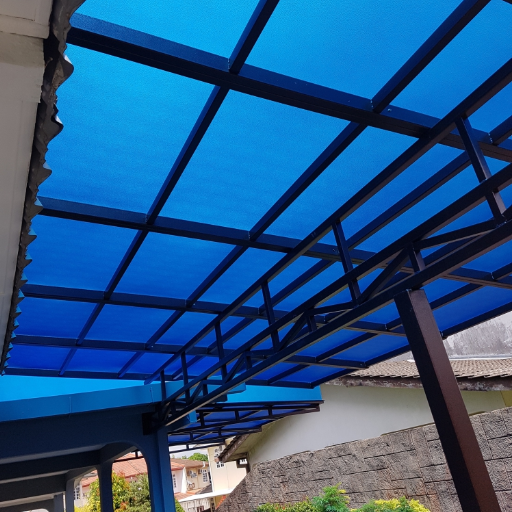
Along with the applications above, polycarbonate shows promise when used in various products. Protective masks, headgear, in-line skates, and body armor utilize polycarbonate due to its thermal insulation properties. Polycarbonate is ideal for automotive parts like headlights and interior components because it is lightweight yet durable. Moreover, it caters to the construction and electronics industry and is utilized in electronic components such as circuit boards or housing. The material is also commonly used in medicine and even architectural designs.
Polycarbonate in everyday products
Due to its unique combination of impact resistance, transparency, and thermal stability, polycarbonate is incredibly useful in many day-to-day things. As far as uses are concerned, it is widely integrated into making eyewear lenses extremely durable and shatter-resistant, adding security and clarity to the lens. Since it is both lightweight and sturdy, polycarbonate is extensively used in electronic devices such as laptops, mobile phones, and gaming consoles. Polycarbonate is also used in crafting items such as reusable water bottles, food containers, and various kitchen items due to its durability and temperature resistance. In addition to this, polycarbonate also plays a role in infrastructure by protecting the form of barriers and even bulletproof glass windows along with roofing sheets, and all of that is possible because of polycarbonate’s strength and optical clarity. With so many applications, it is evident that polycarbonate is essential in our modern life.
Industrial and construction uses
Polycarbonate is extensively used in industries and construction due to its excellent strength-to-weight ratio, impact resistance, and, most importantly, weatherproof. It is widely used in making panels for greenhouses, safety glass, and skylights, as all of this provides resistance and looks appealing. Moreover, owing to its physical properties such as thermal stability and weather resistance, polycarbonate is suitable for roofing sheets, industrial machine barriers, and security barriers. Such traits are beneficial considering the extreme conditions created inside a construction site or an industrial one, which shows this particular structure’s value in construction and industrial design.
Optical and lens applications
Owing to its excellent properties, such as impact resistance, lightweight, and optical clarity, polycarbonate is widely used in applications in optical and lens technology. Such properties make it an ideal candidate for producing eyeglass lenses, goggles, and camera lenses. Its blocking capacity of harmful rays is another functional feature that makes it versatile while ensuring safety and optimal durability for its users. Moreover, polycarbonate also decreases the power of lenses since it has a high refractive index, meaning that the resulting prosthetic lenses would be thinner, thereby increasing comfort and functionality. It has also found applications in producing optical discs like CDs and DVDs because of its excellent transparency and ability to take molds. Polycarbonate has proven to be one of the vital materials in the focus of modern refinements in optical devices because of its quality of optical coherence and toughness.
How does polycarbonate compare to other plastics like acrylic?
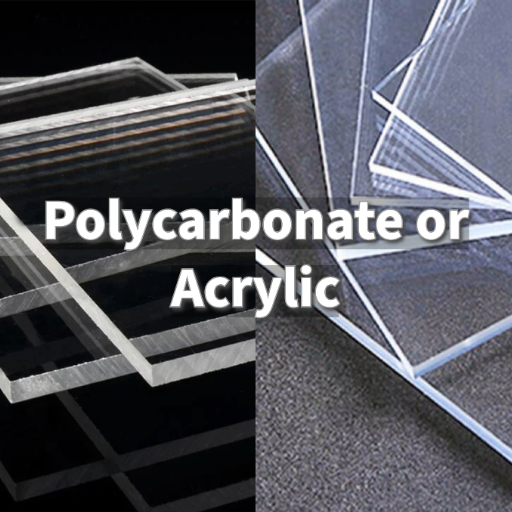
Due to their unique properties, polycarbonate and acrylic should be used for different applications. The only thing that acrylic is better than polycarbonate is its heat resistance. Contrary to acrylic, polycarbonate can be scratched and dented more than 250 times when subjected to impact because of its extraordinary impact resistance. Furthermore, polycarbonate does not deform, making it more heat-resistant and ideal for industrial and demanding purposes. The optical clarity and UV resistance of acrylic are better than those of polycarbonate, making its use widely popular for signage and product displays since they aren’t prone to losing their transparency and clarity over time. If a less intense and heat-resistant material is used for less demanding purposes, then the lethal shatterproof and flexible polycarbonate is an ideal choice. Ultimately, the choice between the two depends on the intended application in which one is required.
Strength and impact resistance comparison
The strength and impact resistance of polycarbonate and acrylic differ sharply, with polycarbonate having a significant edge over acrylic. Polycarbonate is said to have about 30 times more strength than acrylic and is said to be around two hundred. Polycarbonate is, therefore, able to withstand heavy impact and stress without breaking. Meanwhile, acrylic is still about ten times stronger than glass; it’s more likely to crack during a high-stress application. Nevertheless, acrylic possesses power and surface scratch resistance qualities that are valuable when low-impact applications are needed. Because of the remarkable impact resistance of polycarbonate, it is mainly used in the construction of safety equipment such as protective shields, machine guards, and bullet-proof windows. On the other hand, acrylic is frequently used where low-cost and elegant design is desirable and extreme impact resistance is not required.
Optical properties and clarity differences
When comparing polycarbonate and acrylic, the two materials display close levels of optical clarity, pursuing some apparent differences. Furthermore, it is mainly polycarbonate, which offers lower light transmission levels of about 88%, sufficient for applications such as signboards or similar displays. Moreover, it is also worth mentioning that acrylic sightly offers more than double figures at above 90 percent because polycarbonate is also noted for its impressive durability, even surpassing 250 times resistance to impact. It is also worth noting that both materials deteriorate but at different rates, while polycarbonate is noted for maintaining its structural properties till about 125 degrees centigrade. These optical and heat factors can be highly decisive in whether an application will be made from polycarbonate or acrylic and to what extent.
Temperature resistance and durability comparison
Acrylic also has a generally stronger scratch resistance but is noted for being more brittle, however more research is needed to come up with a clear solution as to why acrylic has a generally lower trade off. This also explains why polycarbonate is becoming a standard material for applications ranging from security barriers for sporting venues to more exposed products requiring resistance to wear and tear. Given these numerous differences between the core parameters of polycarbonate and acrylic, it also dramatically impacts the light transmittance and structural longevity of the product on which an application of either of the two materials would be used, thus creating balance and heightening the product’s effectiveness. This excellent balance in this paper can be extremely valuable for industrial processes and allow for both materials to be used for outstanding products and applications.
What are the different types of polycarbonate available?
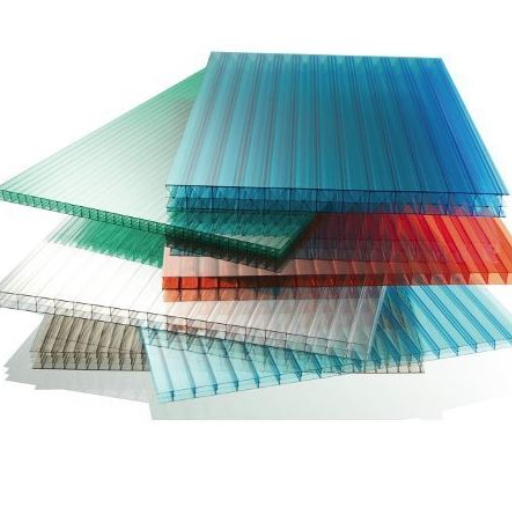
Many classifications of polycarbonate are suitable for different uses. Solid polycarbonate sheets are very tough and, for this specific reason, are popular for glazing and safety barriers due to their strength and clarity. Multiwall polycarbonate has an advantage because it is constructed in layers and can add excellent thermal insulation; it can be used to build greenhouses and even skylights. Corrugated polycarbonate is lighter, impact-resistant, and can be used for roofing and cladding. Each type is designed for optimal performance given specific environmental or structural parameters.
Standard grade polycarbonate
Standard-grade polycarbonate is a thermoplastic polymer with a high degree of versatility. It is strong, clear, and water-resistant. Its strength exceeds glass by nearly 250 times, and it is far lighter, making it suitable for more industries and uses. This material can also retain its form at significant temperatures, usually between -40 and 248 degrees F (-40 degrees C to 120 degrees C).
Basic-grade polycarbonate is often used to construct safety fittings, machine cupboards, car parts, and optical glass. Because of its excellent light transmission characteristics, which can be comparable to glass, it is used in almost all applications where high-clarity optics are required, including lights and window glazing. Moreover, it has natural fire resistance and is often a self-extinguisher, an extra safety feature in critical areas.
Furthermore, ordinary-grade polycarbonate has advantages but is prone to scratching and gets damaged by UV light exposure. These issues are generally solved using surface coatings or UV-resistant additives that can withstand exposure to outdoor elements or highly abusive conditions. Overall, owing to the combination of mechanical characteristics and versatility, standard-grade polycarbonate is in great demand among the industries where performance matters the most.
Optical grade polycarbonate
Optical grade polycarbonate is crafted for unrestrained and precise applications like lenses, eyewear, and other optical devices. This grade is manufactured to lessen the mechanical forces within it and the optical distortions it creates for high-performance purposes. It performs consistently within high-performance applications. It’s often prone to exposure to surface treatments that provide abrasion and UV protection, increasing the extent of its application. This, combined with the dimensional stability and optical clarity, makes it more suitable in industries that are visually critical to the applications.
Specialty polycarbonate formulations
Specialty polycarbonates are created explicitly in such a way as to be tailored to specific industrial purposes, such as added strength or thermal and chemical resistance. A particular type of variant would be High heat resistant polycarbonates, which are ideal for places such as the automotive and aerospace sectors. Flame retardant grades offer varying ignition characteristics, which are much needed in electric and electronic applications. There are also UV-resistant or UV-certified grades of polycarbonate coating that don’t lose clarity when exposed to harsh outdoor conditions, making them suitable for applications such as greenhouse roofing or outdoor signage.
Advanced formulations may also integrate anti-static additives, enhancing performance in specialized electronic manufacturing or cleanroom environments. Particular attention is given to optical-grade polycarbonate for lenses, medical devices, and high volume-very precise optical instruments, which offers superior light transmission with minimal distortion. Moreover, recycled or bio-based sustainable polycarbonate is said to be an environmentally friendly option for industries that are more ecologically conscious. While continuous improvements are pursued, specialty polycarbonate formulations find broader usefulness in more technical fields.
How is polycarbonate manufactured and processed?
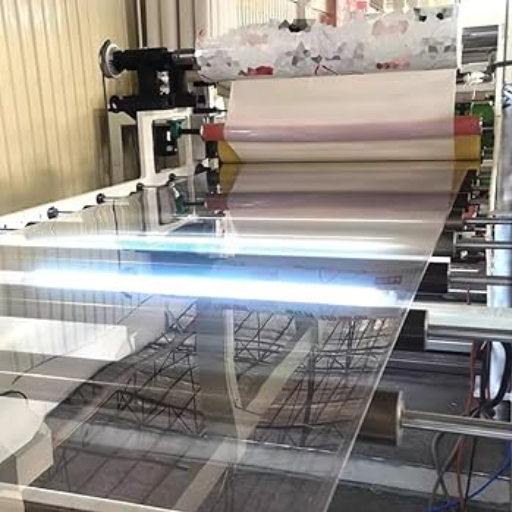
Bisphenol A (BPA) and phosgene polymerization are used in an interfacial process or through melt polymerization to manufacture polycarbonate. The interfacial process involves a reaction between BPA and phosgene in a non-aqueous medium containing an organic solvent under precise temperature and pressure. This results in a viscous polycarbonate resin, purified and turned into pellets. Polycarbonate processing often shapes the material using either injection molding, extruding, or blow molding techniques, depending on its final purpose. Since polycarbonate retains thermoplastic properties, it can be melted and reshaped. Thus, it can be used to fabricate complicated and intense end products effectively.
Raw materials and production process
Polycarbonate synthesis utilizes two key starting materials: bisphenol A (BPA) and phosgene. At the start of the process, two isocyanates and diols are reacted with a solvent and a catalyst. As a result, the high-performance polymer chain is produced during the interfacial polymerization. It begins with the dissolution of BPA into the caustic soda solution. This solution is then placed in the reactor, whereby phosgene gas is introduced. In addition, diphenyl carbonate can also be employed as a substitute for phosgene gas. This method could be a better solution because it is more environmentally friendly.
Temperature and pressure control throughout each stage are essential in polymer chain length and molecular structure. After polymerization, it is crucial to purify caustic trimethylamine to remove any contaminant that formed and allow for transformation into pellets. The result is that thick grain-shaped strips or thin plates are used as the input material for downstream processing, such as extrusion, injection molding, and thermoforming. Such techniques make polycarbonate valuable since it is used in eyeglasses, car parts, and electric appliances.
Molding and forming techniques
In polycarbonate processing, several other advanced methods are adapted for particular needs. One of the most popular techniques is injection molding, whereby the melted polycarbonate chips are fed into the machine’s heater barrel to create intricate and accurate shapes suitable for industrial and consumer use. Extrusion is also when molten material is forced through a die to make elongated shapes or cross sections such as sheets or tubing. Thermoforming, on the other hand, involves heating a thermoplastic, such as a polycarbonate sheet, to its softening point and then fitting it into a mold to produce a part. These processes maximize the properties of polycarbonate, such as impact resistance, transparency, and flexibility, and the range of the application of polycarbonate in automotive, medical appliances, and electronic goods.
Finishing and post-processing methods
The post-processing and finishing operations determine how the polycarbonate products’ aesthetics and performance are optimized. Among the most popular methods employed include cutting, sanding, and polishing. These methods ensure that the surface quality is improved and the geometric tolerance is within limits. Edge flame polishing is used for applications that need enhanced toughness of the edges. Besides, polycarbonate’s impact resistance allows drilling and machining techniques to add features without the threat of delamination. Aside from that, hard coats and other surface coatings can also be used to enhance the scratch and UV resistance of the materials. Customization of the surface is also possible through painting or printing techniques to ensure that the requirements of both the design and functional parts are satisfied. All these methods improve the functionality and the application of polycarbonate in different fields.
What are the benefits and limitations of using polycarbonate?
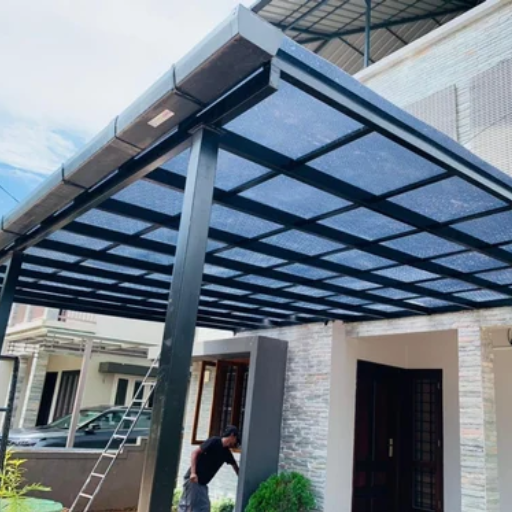
Polycarbonate’s high impact resistance, superb optical transparency, and low density make it suitable for all applications, from the building industry to electrical purposes. Its versatility is further enhanced by its formability, as complicated shapes and structural add-ons can be made. Moreover, as a natural material, polycarbonate can provide UV resistance when a proper coating is used and can withstand extreme weather conditions.
Nonetheless, there are barriers to polycarbonate. Due to its susceptibility to scratches, applying coatings to give sufficient protection is required. It has less heat resistance than specific alternatives, making it possible to get deformed when exposed to high temperatures. Further, with other weaker plastics having more cost-effectiveness, polycarbonate’s higher price may be a factor in some projects. All these shortcomings are outweighed by the optical clarity and strength that polycarbonate material provides, which is why industries still utilize this material.
Advantages of polycarbonate in various applications
Polycarbonate is appreciated for its unique property of being lightweight yet almost 250-strong compared to glass, which makes it an ideal choice for a wide range of applications such as safety teaming, windows, and ballistic panels. Polycarbonate has one other positive characteristic: optical clarity that makes it practical for lenses, LED light covers, and see-through shields. Moreover, polycarbonate has excellent thermal stability and can operate efficiently under extremely high and extremely low temperatures, essential for aerospace and electronic applications. In addition, it has a natural resistance to ultraviolet rays, which makes it very useful outdoors for roofing sheets, greenhouses, and protective housing units. Lastly, polycarbonate displays excellent flexibility and is thermally formable and injection moldable into intricate shapes, providing broad applications across industries.
Potential drawbacks and limitations
Although polycarbonate has many benefits, it also has its weaknesses. The application of sturdy coatings becomes necessary for instances where excessive wearing or the presence of abrasive material is expected, as polycarbonate’s scratching is highly vulnerable. Furthermore, polycarbonates are prone to erosion or discoloration as they are reactive to organic solvents and alkaline chemicals. It also has a heavy price tag, which does not compromise ease of use; therefore, thermoplastic would not be practical in uses hypersensitive to costs. The thermoplastic is subject to distortions and relative declines in mechanical properties even though it can resist pounding, if it is at high temperature for quite some time and the proper stabilizers are absent, thus, its applications in regions if high heat is prolonged are very restricted.
Environmental considerations and recyclability
Since the furnaces are highly specialized, recycling polycarbonate creates other materials that burn tons of non-recyclable material. Impurities or additives will complicate recycling, and these impurities or additives might be challenging to remove. Finally, considering the use of fossil fuels and the sum of greenhouse gases produced during the introduction of polycarbonate, it emphasizes the negative aspects of sustainability. Overstating the importance of recycling technology and inflating the number of countries focusing on the circular economy is an excellent start to caution elbow grease.
References
Frequently Asked Questions (FAQ)
Q: What is polycarbonate (PC), and what are its main characteristics?
A: Polycarbonate (PC) is a versatile thermoplastic polymer known for its exceptional combination of properties. It is a transparent plastic material with high impact strength, heat resistance, and optical clarity. Due to its durability and versatility, polycarbonate is commonly used in various applications.
Q: What are the key benefits of polycarbonate?
A: Polycarbonate’s benefits include its high impact strength, optical clarity, heat resistance, and lightweight nature. It is also highly moldable, making it suitable for various manufacturing processes. Polycarbonate’s versatility allows it to be used in multiple applications, from automotive parts to consumer electronics.
Q: What are some standard products made from polycarbonate?
A: Polycarbonate products include safety goggles, automotive headlamp lenses, smartphone cases, water bottles, CDs and DVDs, greenhouse panels, and bulletproof glass. They are often used in applications requiring transparency, durability, and impact resistance.
Q: What are the physical properties of polycarbonate?
A: Polycarbonate’s physical properties include high impact strength, optical clarity, heat resistance (up to 135°C), and good dimensional stability. It is also lightweight, has good electrical insulation properties, and can be easily molded or thermoformed. These properties make polycarbonate a popular choice for many industrial and consumer applications.
Q: How is polycarbonate used in construction and architecture?
A: Polycarbonate is used in construction and architecture to create transparent or translucent roofing panels, skylights, and wall systems. Polycarbonate sheets are lightweight, durable, and offer excellent insulation properties. Due to their impact resistance and weather durability, they are also used in greenhouses, canopies, and noise barriers.
Q: What manufacturing processes are used to produce polycarbonate parts?
A: Polycarbonate parts can be produced using various manufacturing processes, including injection molding, extrusion, thermoforming, and blow molding. The choice of process depends on the final product’s desired shape, size, and application. Injection molding is particularly popular for creating complex polycarbonate parts with high precision.
Q: Can polycarbonate be recycled?
A: Yes, polycarbonate can be recycled. It is identified by the recycling code “7” or “Other.” Polycarbonate can be reprocessed into new products while not as commonly recycled as other plastics. However, it’s important to note that recycling facilities may not accept all polycarbonate products, so check with local recycling guidelines.
Q: How does polycarbonate compare to other transparent plastics?
A: PC offers superior impact strength and heat resistance than other transparent plastics like acrylic (PMMA) or standard polycarbonate. While acrylic may have better optical clarity, polycarbonate is more durable and can withstand higher temperatures. This makes polycarbonate the preferred choice for applications requiring both transparency and toughness.
Q: Are there any limitations or drawbacks to using polycarbonate?
A: While polycarbonate is highly versatile, it does have some limitations. It can be susceptible to scratching and may be yellow when exposed to UV radiation. Some chemicals can also degrade polycarbonate. Additionally, it is generally more expensive than some other standard plastics. However, proper design and protective coatings or additives can often mitigate these drawbacks.

